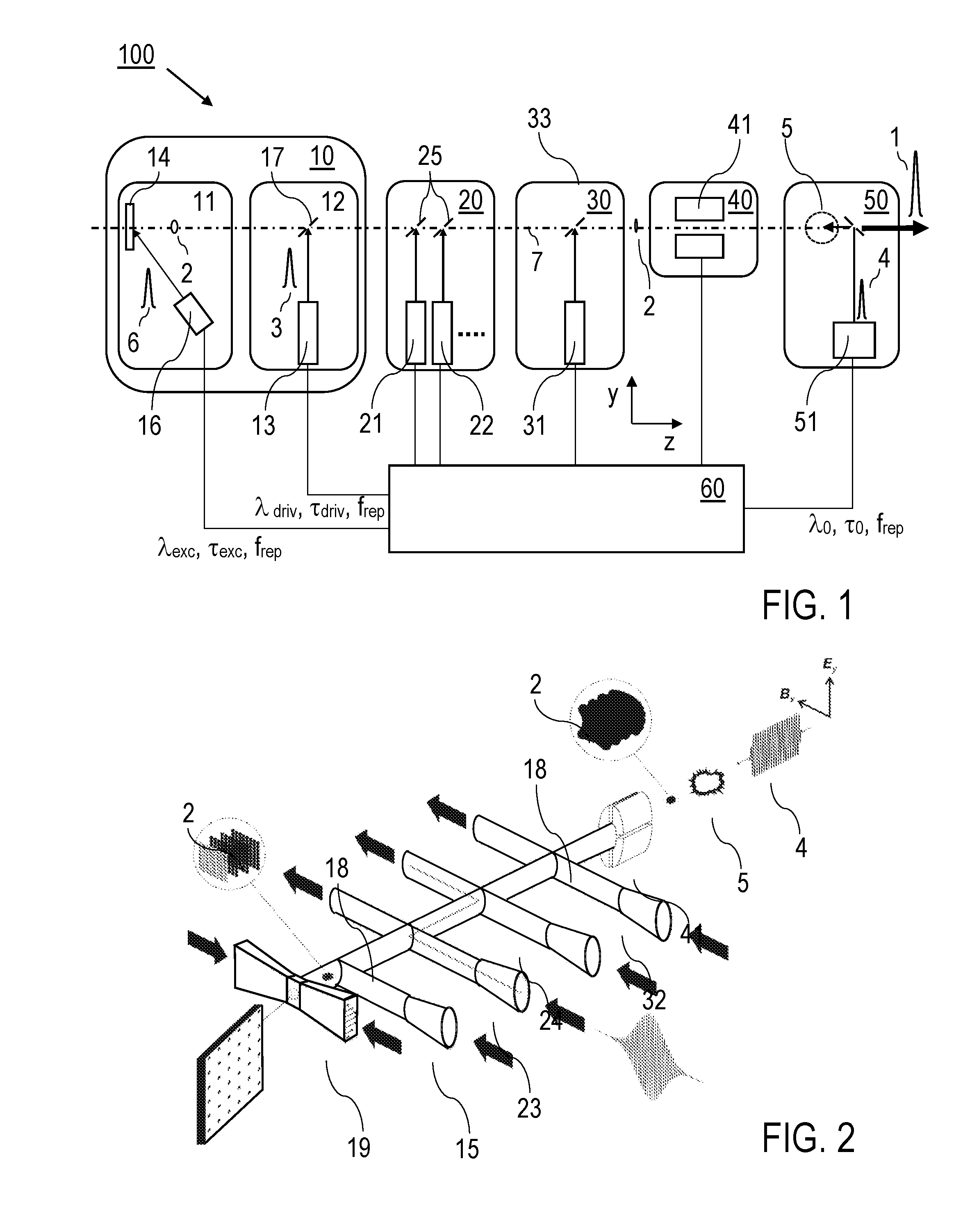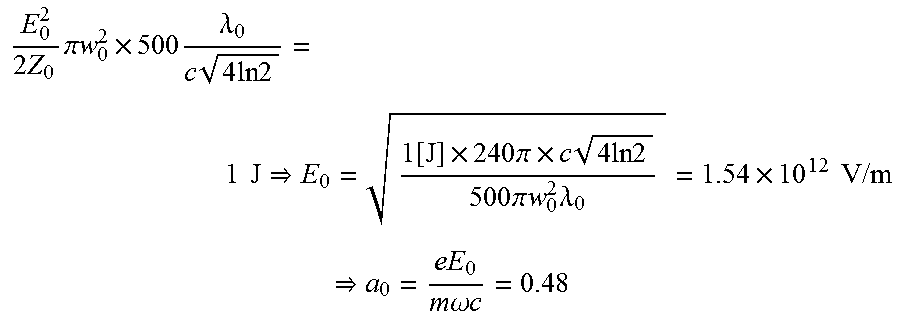X-ray pulse source and method for generating x-ray pulses
a pulse source and x-ray technology, applied in the direction of accelerators, laser details, electric discharge tubes, etc., can solve the problems of low brilliance of high photon energy, low photon energy relative low, and inability to achieve hard x-ray range, etc., to achieve short undulator lengths, less power and operating costs, and less facility costs
- Summary
- Abstract
- Description
- Claims
- Application Information
AI Technical Summary
Benefits of technology
Problems solved by technology
Method used
Image
Examples
Embodiment Construction
[0088]Features of preferred embodiments of the inventive X-ray source and the inventive method for creating X-ray pulses are described in the following with reference to FIGS. 1 and 2 showing the combination of an electron pulse source device including the THz driver pulse source for creating single cycle and multi-cycle THz driver pulses with the electromagnetic undulator. It is emphasized that details of the pulse sources for creating excitation pulses for the photoemission of the electrons, THz pulses for driving, accelerating and compressing purposes, and electromagnetic undulator pulses, as well as details of the inverse Compton scattering or FEL processes are not described as they are known as such from prior art. Furthermore, it is emphasized that the figures present schematic illustrations only. Details of the X-ray source, like sensor and monitoring equipment, vacuum equipment or enclosing vessels are not shown. The components of the X-ray source are illustrated as being co...
PUM
 Login to View More
Login to View More Abstract
Description
Claims
Application Information
 Login to View More
Login to View More - R&D
- Intellectual Property
- Life Sciences
- Materials
- Tech Scout
- Unparalleled Data Quality
- Higher Quality Content
- 60% Fewer Hallucinations
Browse by: Latest US Patents, China's latest patents, Technical Efficacy Thesaurus, Application Domain, Technology Topic, Popular Technical Reports.
© 2025 PatSnap. All rights reserved.Legal|Privacy policy|Modern Slavery Act Transparency Statement|Sitemap|About US| Contact US: help@patsnap.com



